This morning, I stepped back in time while walking the ancient battlements of Sforza Castle in Milan. The exclusive guided tour took me along patrol walkways that most visitors never get to experience, offering breathtaking views of both the castle grounds and Parco Sempione beyond. The battlements tour provides unique access to parts of this 15th-century fortress that can only be visited with official guides and custody staff.
My knowledgeable art historian guide brought the castle’s majestic history to life. They explained the defensive strategies, weapons, and daily life of those who once guarded these walls. With the provided headset, I caught every fascinating detail about the Sforza family, who built this impressive structure. The morning light cast perfect shadows across the stone walkways, making every photo look like something from a history book.
The battlements tour offers a completely different perspective than the castle museums below. The peaceful morning walk along these historic walls gave me a deeper appreciation for Milan’s rich past before the crowds arrived. After exploring the battlements, I continued through the castle grounds and into the surrounding park, where locals were enjoying a quiet morning away from the city’s energy.
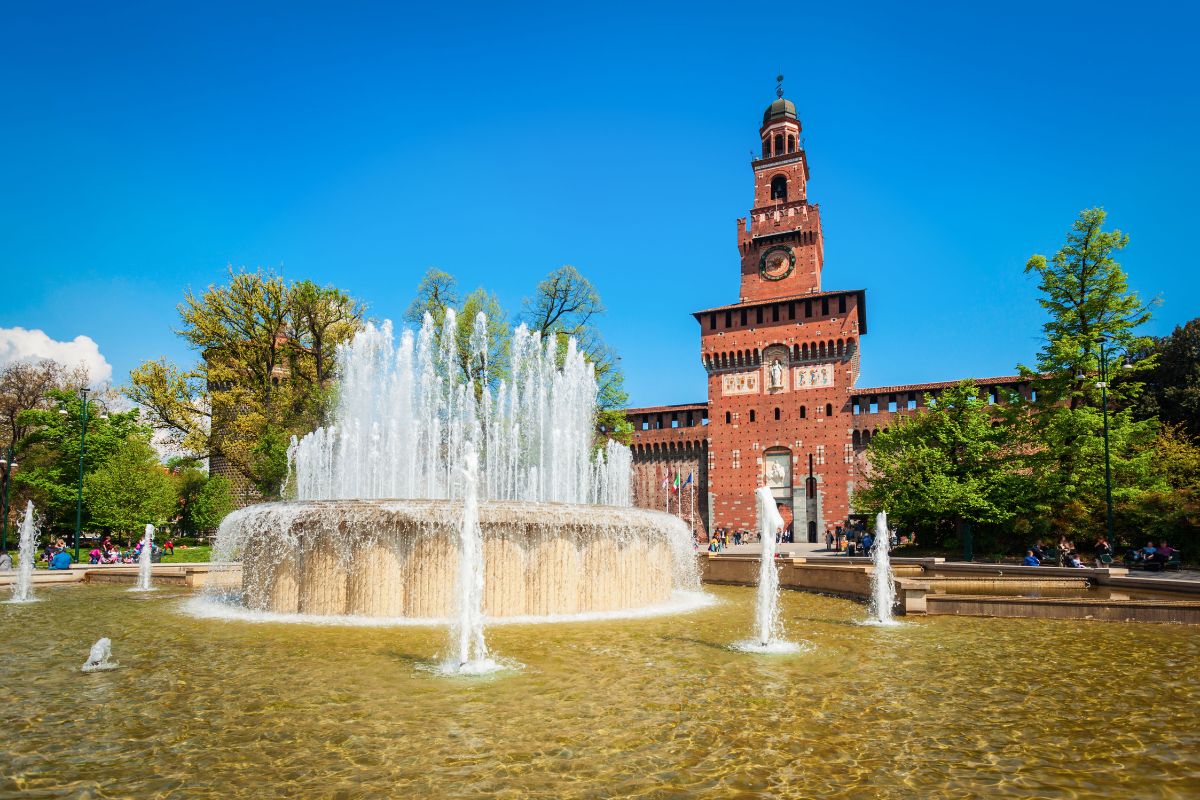
A Journey Through History
Walking the battlements of Sforza Castle took me through centuries of Milan’s rich past. The castle stands as a testament to power shifts, religious transformations, and architectural innovation that shaped this vibrant Italian city.
Rising from the Roman Empire
Milan’s story begins long before the castle walls I explored today. The city was founded as Mediolanum by the Insubres around 600 BCE, but it was under Roman rule that it truly flourished.
By the 3rd century CE, Milan had become an imperial residence and one of the most important cities in the Western Roman Empire. I could almost imagine the Roman soldiers patrolling these lands, though their fortifications were much different than the castle I walked through today.
The strategic location of Milan—nestled between Alpine passes and fertile plains—made it a jewel worth defending. Roman walls once encircled parts of what would later become the castle grounds, establishing a military tradition that would continue for centuries.

The Edict of Milan and Christianity
Standing on these battlements, I thought about how Milan changed the course of world history in 313 CE. It was here that Emperor Constantine issued the famous Edict of Milan, granting religious tolerance to Christians throughout the empire.
This pivotal moment transformed Milan into an early Christian center. The city’s religious importance grew under Saint Ambrose, who served as bishop from 374 to 397 CE. His influence was so profound that the Ambrosian rite, still practiced today, bears his name.
Churches began to dot the Milanese landscape, many built atop former Roman temples. This religious heritage created a foundation for the power structures that would later control the castle. Christianity became intertwined with governance in ways that shaped Milan’s development for centuries.

The Visconti Dynasty’s Creed
The battlements I walked today were first conceived by the ambitious Visconti family. They rose to power in the 13th century and ruled Milan for nearly 200 years.
Galeazzo Visconti began construction of a castle on this site in the 1360s. The family’s symbol—a serpent devouring a man—can still be spotted in various decorative elements throughout the castle. Their motto was telling: “Only through force can we maintain greatness.”
The Visconti transformed Milan into one of Europe’s most powerful city-states. Their marriages connected them to royal houses across Europe, while their military prowess kept rivals at bay. Walking these walls, I felt the weight of their strategic thinking—every tower and battlement positioned for maximum defensive advantage against the constant threats facing medieval Lombardy.
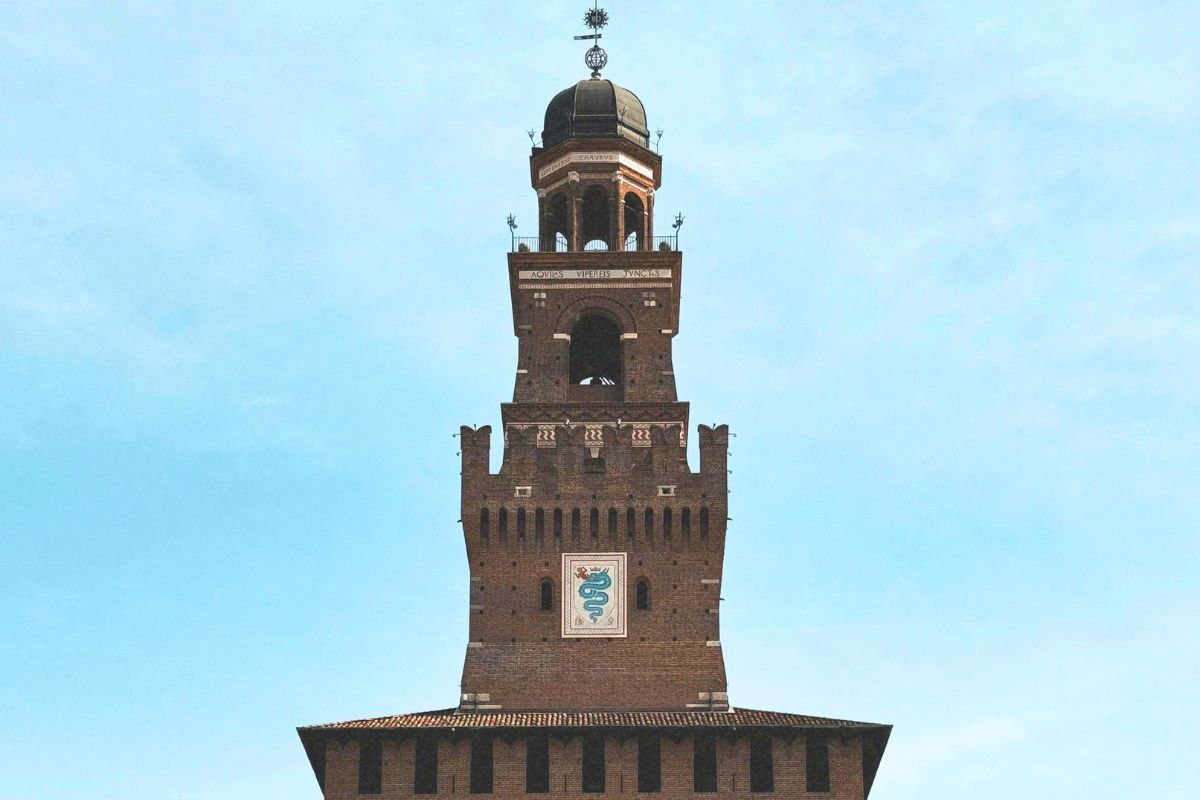
Sforza Castle: A Fortified Legacy
The castle reached its architectural peak under Francesco Sforza, who seized power in 1450. He rebuilt the fortress into what I explored today—a massive quadrangular structure with corner towers and impressive battlements.
The Sforza family employed the best architects of their time, including Bramante and Leonardo da Vinci. These visionaries balanced military needs with Renaissance aesthetics. The defensive features I walked along were designed to withstand sieges while projecting power and prestige.
During my tour, I learned that the castle withstood numerous attacks over the centuries. The thickness of the walls—up to 7 meters in places—and the height of the towers made it nearly impregnable.
The battlements provided defenders with excellent visibility across the surrounding countryside, allowing them to spot approaching enemies long before they reached the city gates. Standing there today, I gained a new appreciation for medieval military engineering.
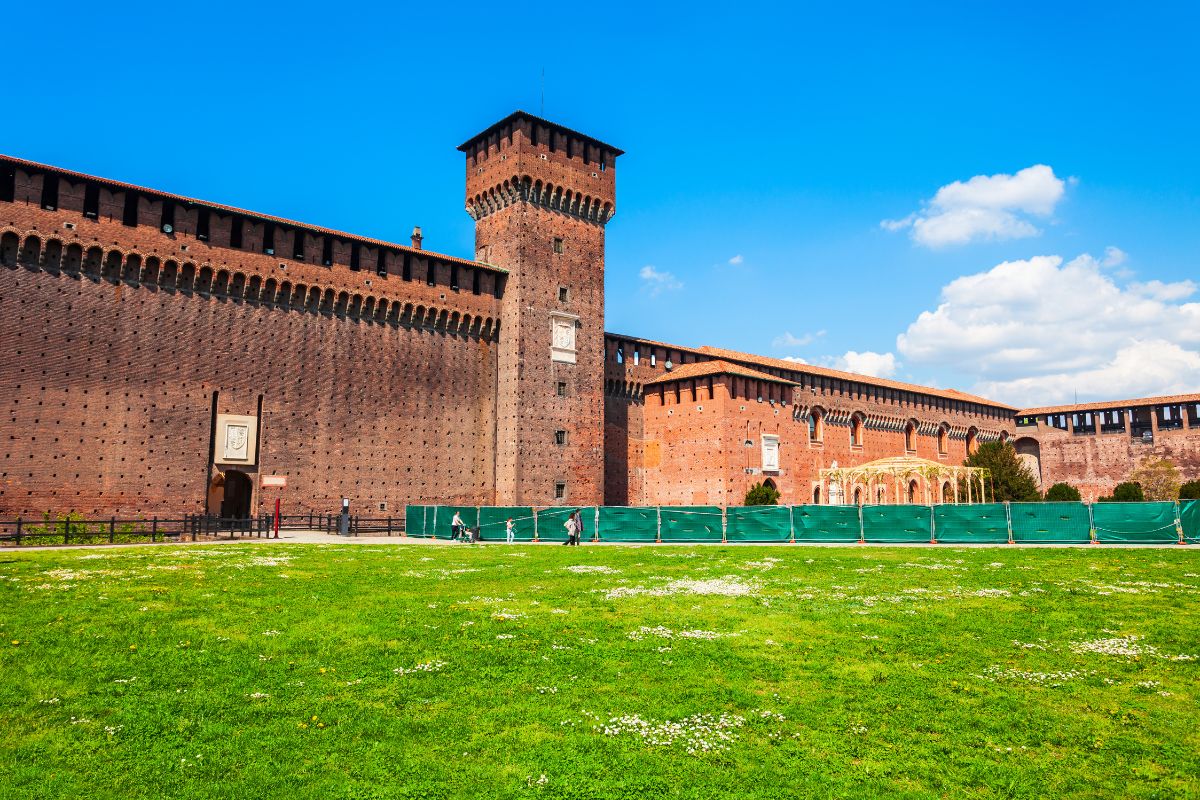
Exploring the Castle Grounds
The vast expanse of Sforza Castle offers more than just museums and artifacts. Its imposing structure tells stories of Milan’s rich history through every brick and battlement.
The Entrances and Battlements
I approached the castle through the main entrance facing Piazza Castello, walking beneath the massive brick archway that once housed a drawbridge. The castle walls stand tall and formidable, a testament to their defensive purpose.
The battlements are truly impressive up close. I joined a guided tour that allowed access to the patrol walkways – something you can only do with official guides and staff.
From atop these walls, I gazed down at both courtyards and the city beyond. The brick parapet offers protection for defenders while providing strategic views in all directions.
Guards once paced these same paths, watching for enemies approaching Milan. Today, tourists like me capture photos of the magnificent views instead.
The round battlements are particularly interesting, designed to eliminate blind spots in defense. Their brick construction has weathered centuries remarkably well.
A Walk in Parco Sempione
Stepping through the rear castle exit, I entered the refreshing greenery of Parco Sempione. This sprawling park serves as the castle’s backyard and offers a peaceful retreat from Milan’s urban energy.
Wide pathways wind through lush lawns where locals jog and visitors rest. The contrast between the imposing castle and the serene park creates a perfect balance.
I strolled past small ponds and decorative gardens blooming with seasonal flowers. The park’s design offers multiple vantage points to admire the castle’s exterior.
On sunny days like today, the park fills with Milanese enjoying picnics and sunbathing. It’s the perfect spot to rest tired feet after exploring the castle’s museums.
The park extends quite far, eventually reaching the Arco della Pace (Arch of Peace). I recommend allowing at least 30 minutes to appreciate both the park and the views of the castle it provides.
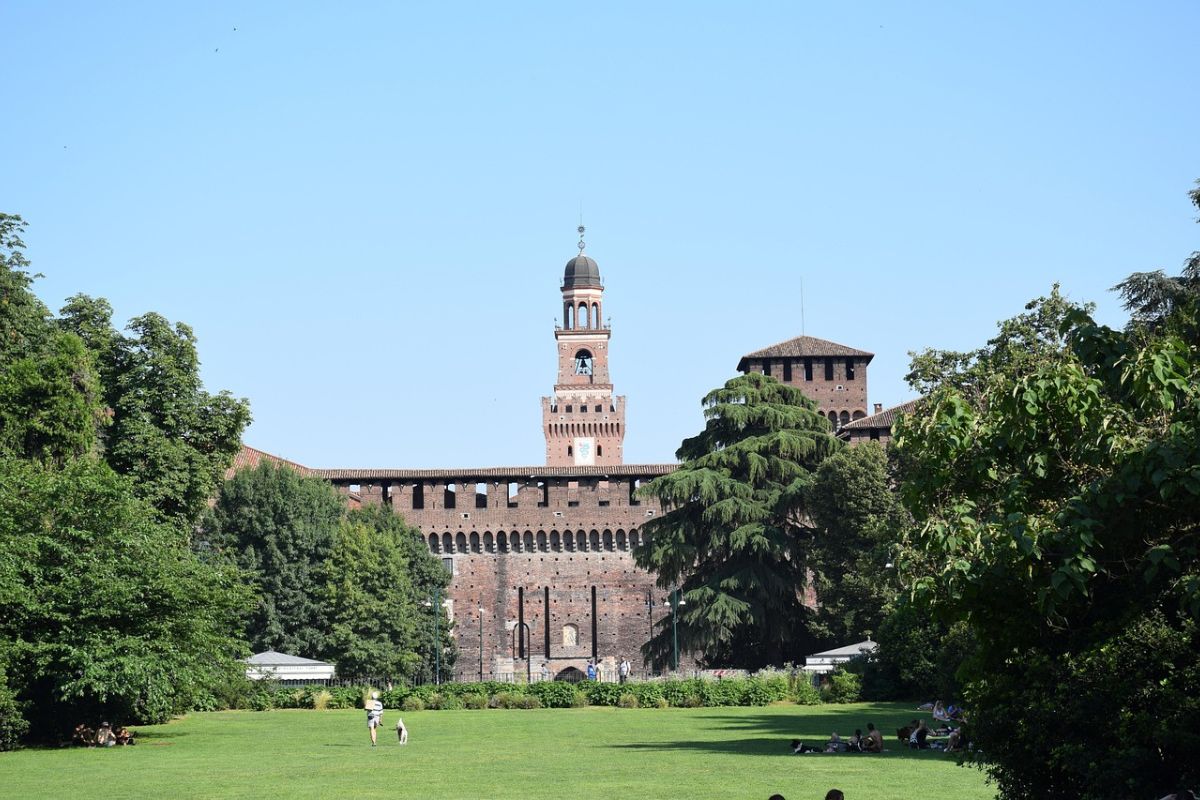
Sforza’s Tower Majesties
The distinctive towers of Sforza Castle dominate Milan’s skyline. The central Torre del Filarete stands tallest, rebuilt after destruction in the 16th century.
Each tower served both defensive and symbolic purposes. Their height allowed lookouts to spot approaching dangers while projecting the Sforza family’s power to all who gazed upon them.
I marveled at how the sunlight plays on the brick surfaces throughout the day. Morning light bathes the eastern towers in golden hues, while afternoon sun highlights the western structures.
The corner towers feature unique architectural elements that reflect different periods of construction and renovation. Some have conical roofs while others feature flat, defensive platforms.
From certain angles, the towers appear to touch the sky, especially when framed against Milan’s blue horizon. Their imposing nature makes me appreciate the engineering achievements of 15th-century builders.
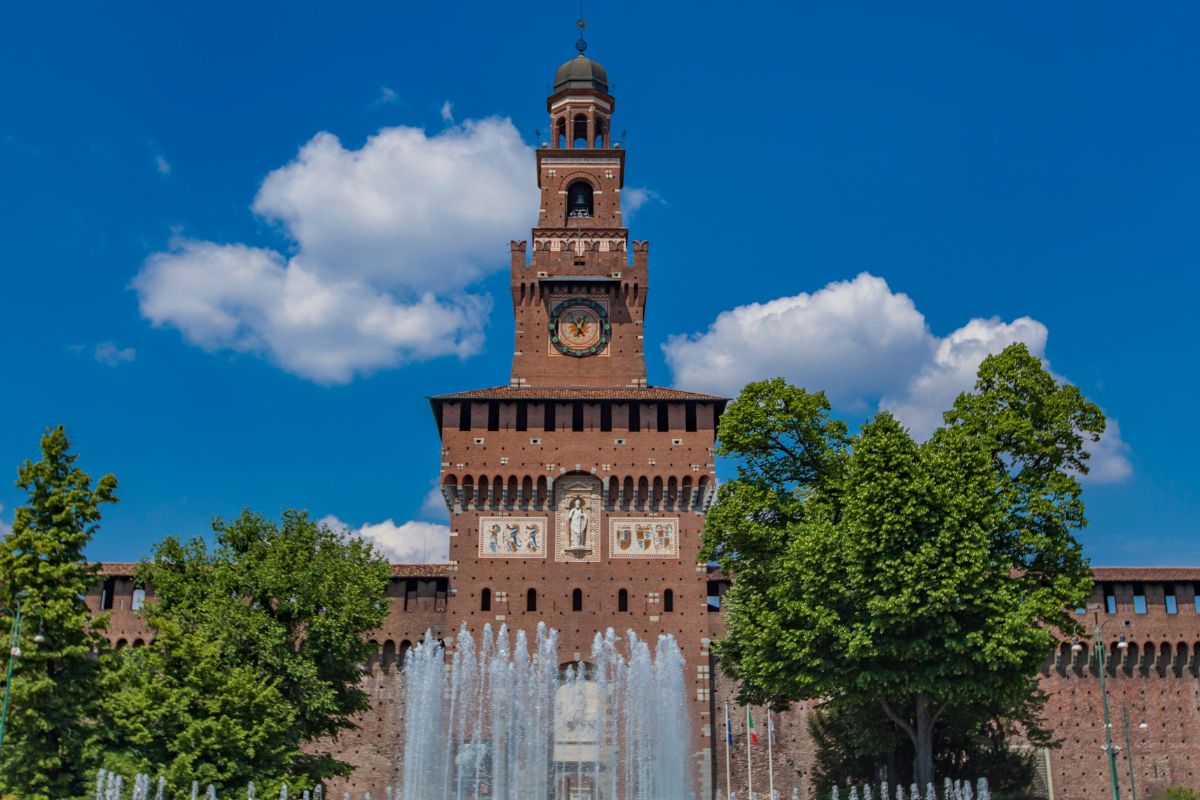
Understanding Castle Architecture
Sforza Castle represents a fascinating blend of medieval military architecture and Renaissance refinements. The massive exterior walls stand in stark contrast to some of the more delicate interior courtyards.
I noticed how the structure transitions from purely defensive elements to more decorative features as you move deeper inside. This reveals the castle’s dual purpose as both fortress and palace.
The building materials tell their own story. Primarily constructed of red brick, the castle incorporates stone elements for structural support and decorative accents.
Studying the various openings in the walls shows the evolution of military technology. Narrow slits for archers gave way to wider openings for early firearms as warfare changed.
The moat that once surrounded the entire structure has been filled in, but you can still see evidence of where it existed. This water barrier provided crucial additional protection against attackers.
Art and Culture Within the Walls
Sforza Castle isn’t just a military fortress but a vibrant cultural center housing some of Milan’s most precious artistic treasures. The castle’s transformation from medieval stronghold to cultural repository offers visitors a journey through centuries of Italian artistic excellence.
Galleries and Treasures of Art
The castle houses several museums that showcase remarkable collections spanning different periods and styles. Walking through the Pinacoteca del Castello, I was captivated by masterpieces from renowned Italian painters, including works from the Renaissance period.
The Museum of Ancient Art particularly impressed me with its sculpture collection. Michelangelo’s unfinished Rondanini Pietà, his final work, stands as the crown jewel of the collection.
The Egyptian Museum surprised me with its comprehensive collection of artifacts. Ancient sarcophagi and funerary items transport visitors thousands of years back in time.
The decorative arts museum displays exquisite furniture, tapestries, and ceramics that once adorned noble residences. These everyday objects tell stories about life in Renaissance Milano that history books often miss.
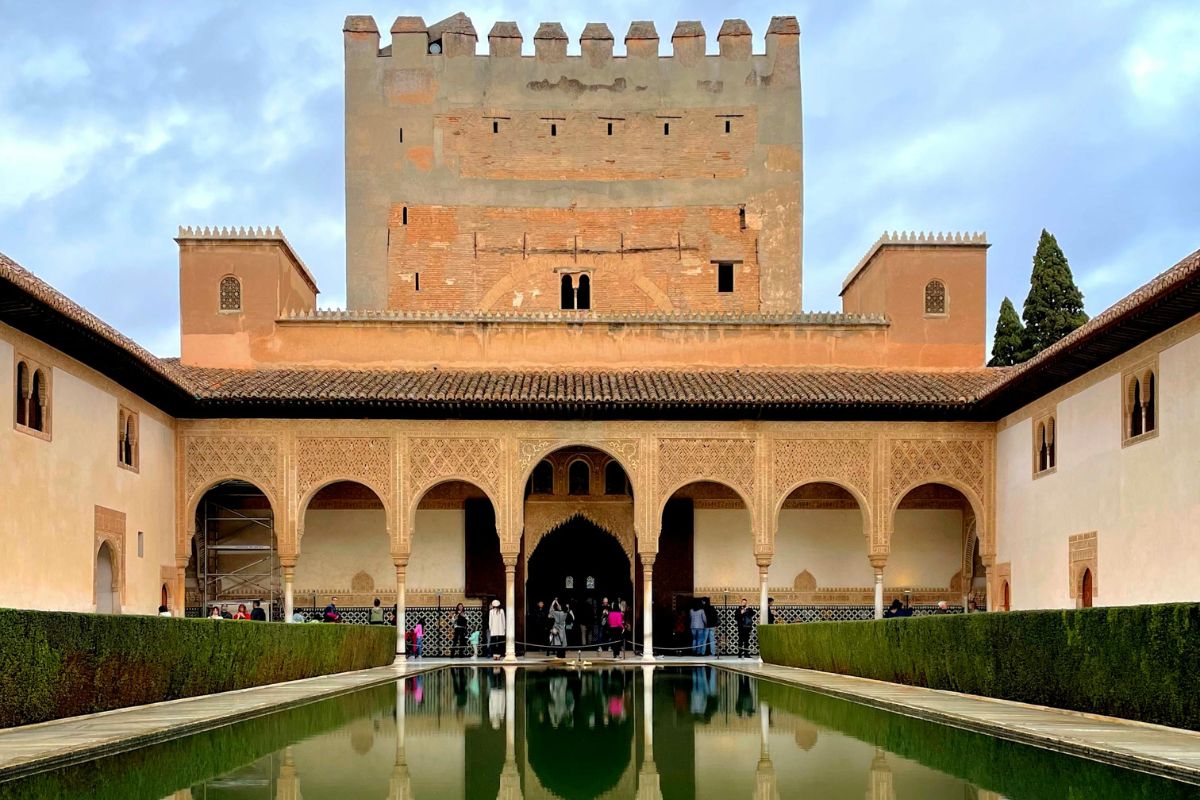
Leonardo da Vinci’s Influence
Leonardo’s presence is felt throughout the castle, reflecting his significant relationship with Milano during the late 15th century. The genius worked here under the patronage of Ludovico Sforza, creating some of his most influential works.
The Sala delle Asse showcases Leonardo’s remarkable ceiling decoration featuring an intricate pattern of mulberry trees. Recently restored, these delicate paintings demonstrate his keen observation of nature.
My guide pointed out that while visiting the castle, it’s worth remembering Leonardo’s “Last Supper” is nearby at Santa Maria delle Grazie. Many castle tours offer combined tickets to see both masterpieces.
Leonardo’s Codex Atlanticus manuscripts occasionally display selected pages in the castle’s library. His detailed sketches and notes reveal the mind of a man centuries ahead of his time.
Musical Echoes from La Scala
The castle regularly hosts musical performances that connect to Milano’s rich musical heritage, particularly its association with La Scala opera house.
During summer evenings, the castle courtyard transforms into an open-air concert venue. I was lucky to catch a string quartet performing classical pieces that echoed magnificently against the ancient walls.
The Museum of Musical Instruments houses over 700 historical instruments dating from the 15th to 20th centuries. The collection includes rare pieces like ornate Renaissance lutes and experimental instruments from Milano’s musical innovators.
The castle’s acoustic design wasn’t accidental. Standing in certain spots, I noticed how perfectly sound travels—a reminder that Renaissance architects understood the science of sound long before modern audio engineering.
The Castle Through the Seasons
Sforza Castle transforms dramatically with Milan’s changing seasons, offering visitors unique experiences throughout the year. The ancient battlements and courtyards take on different personalities as the weather shifts, creating distinct atmospheres for exploration.
Summer in Sforza’s Embrace
The summer sun bathes the castle’s honey-colored walls in a warm glow, making it a perfect time for my morning walks along the panoramic battlements. Temperatures in Milan can soar above 90°F (32°C), but the castle’s thick medieval walls provide welcome relief from the heat.
I’ve noticed the courtyard gardens burst with vibrant colors during these months. Tourists gather in the shaded areas, their cameras capturing the striking contrast between blue skies and the fortress’s imposing silhouette.
Summer evenings bring special events to the castle grounds. Local families and visitors alike spread picnic blankets in the adjacent Sempione Park, creating a festive atmosphere that extends the castle experience.
Winter’s Solace in Stone
Winter transforms Sforza Castle into a contemplative sanctuary. Morning fog often shrouds the battlements, creating a mystical atmosphere as I walk the same paths soldiers once patrolled centuries ago.
Tourist crowds thin considerably during colder months. This allows for a more intimate exploration of the fortress that once housed Milan’s ruling family. The panoramic walkways offer stunning views of the city’s winter landscape, especially after rare snowfalls dust the surrounding parks.
The interior museums become even more appealing during winter visits. I’ve spent hours warming up inside while admiring Leonardo da Vinci’s works and other treasures housed within the castle walls.
Early December brings holiday decorations that transform the medieval structure into a festive wonderland, making it a magical time to experience this iconic Milan attraction.
A Guide to a Memorable Visit
Planning your visit to Sforza Castle’s battlements can make the difference between a good experience and an unforgettable one. The right timing and preparation will help you fully appreciate this medieval masterpiece in the heart of Milano.
Travel Tips for the Modern Explorer
I recommend wearing comfortable shoes for the battlements tour. You’ll be doing plenty of walking on uneven surfaces.
The views are spectacular, so don’t forget your camera. Make sure your phone is charged.
Headsets are provided during guided tours. I found them essential for hearing the art historian guides clearly while moving through the castle.
Summer in Milano can get quite hot. So, bring water and wear sunscreen if you’re exploring the exposed battlements. Spring and early fall offer milder temperatures.
Consider combining your castle visit with other nearby attractions. The Duomo is visible from the battlements on clear days. It’s just a pleasant 15-minute walk away through the heart of the city.
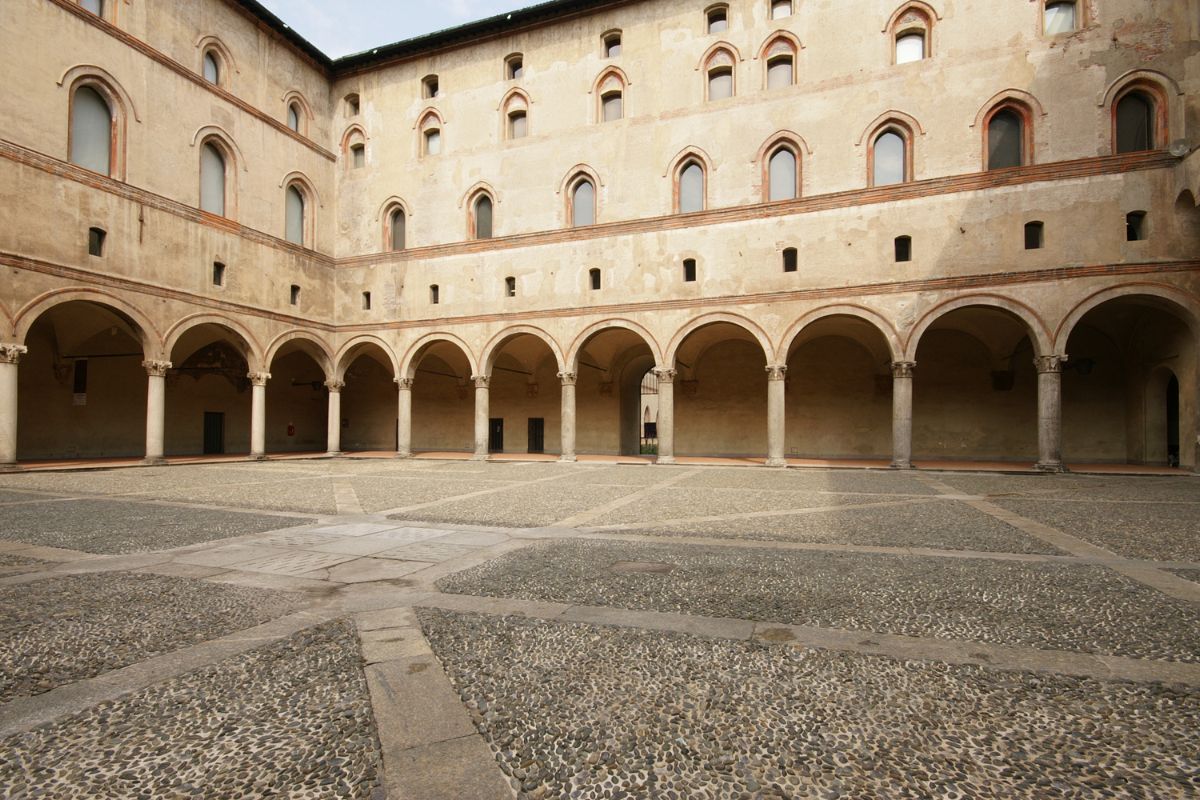
Considering Time: Scheduling Your Tour
Morning tours typically offer cooler temperatures and smaller crowds. I booked my battlements tour for 9:30 AM. I found it was perfect – the light was beautiful for photos of both the castle and the Milano skyline.
Most guided tours last about 90 minutes. This gives you plenty of time to explore the courtyards afterward. If you’re planning to see the castle’s museums too, set aside at least half a day.
Booking in advance is essential, especially during the summer months when tourists flock to Northern Italy. I reserved my spot two weeks ahead through Viator and had no issues.
If you’re visiting during peak season (June through August), try scheduling your tour on a weekday. This will give you a more intimate experience than a weekend visit.

